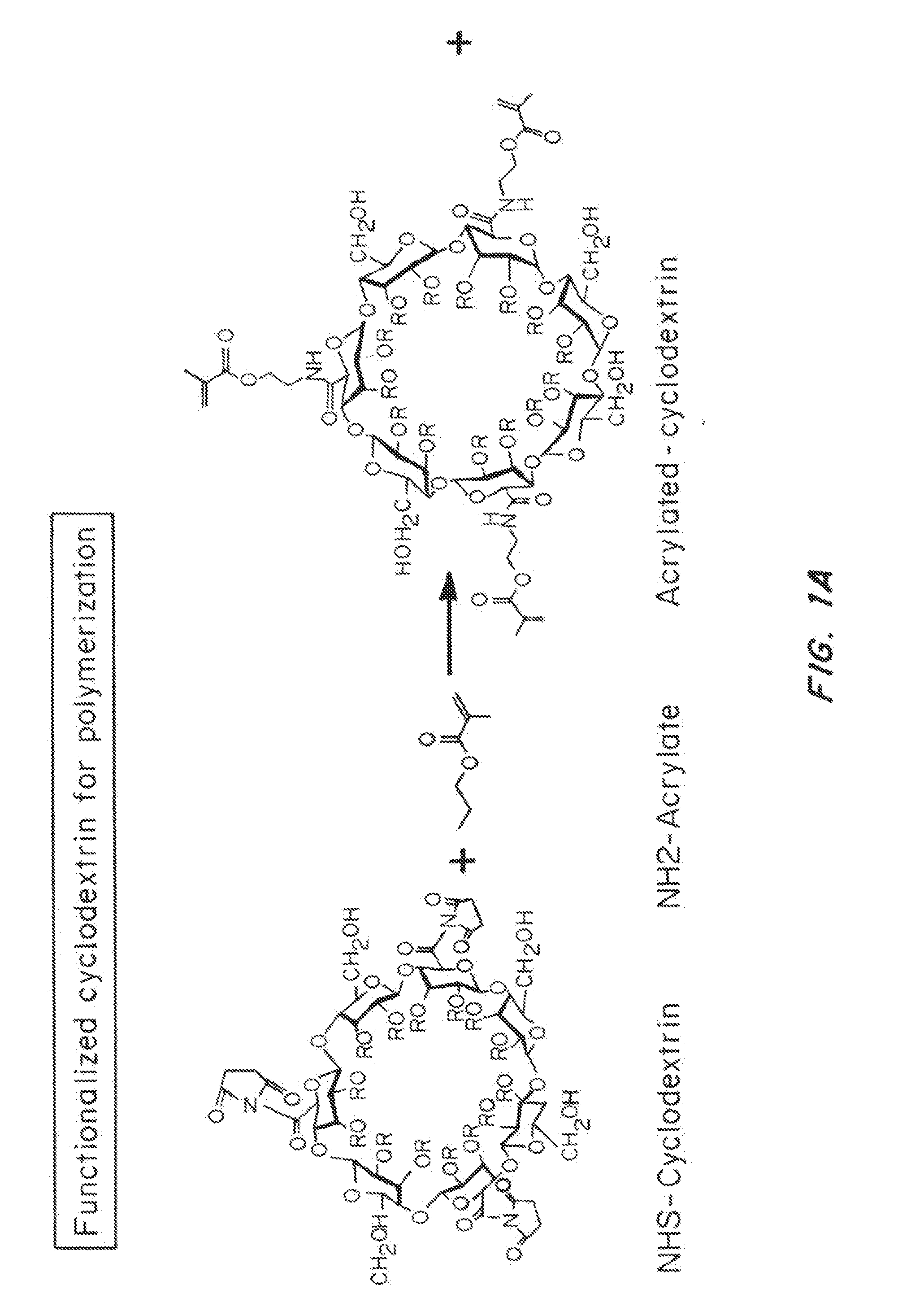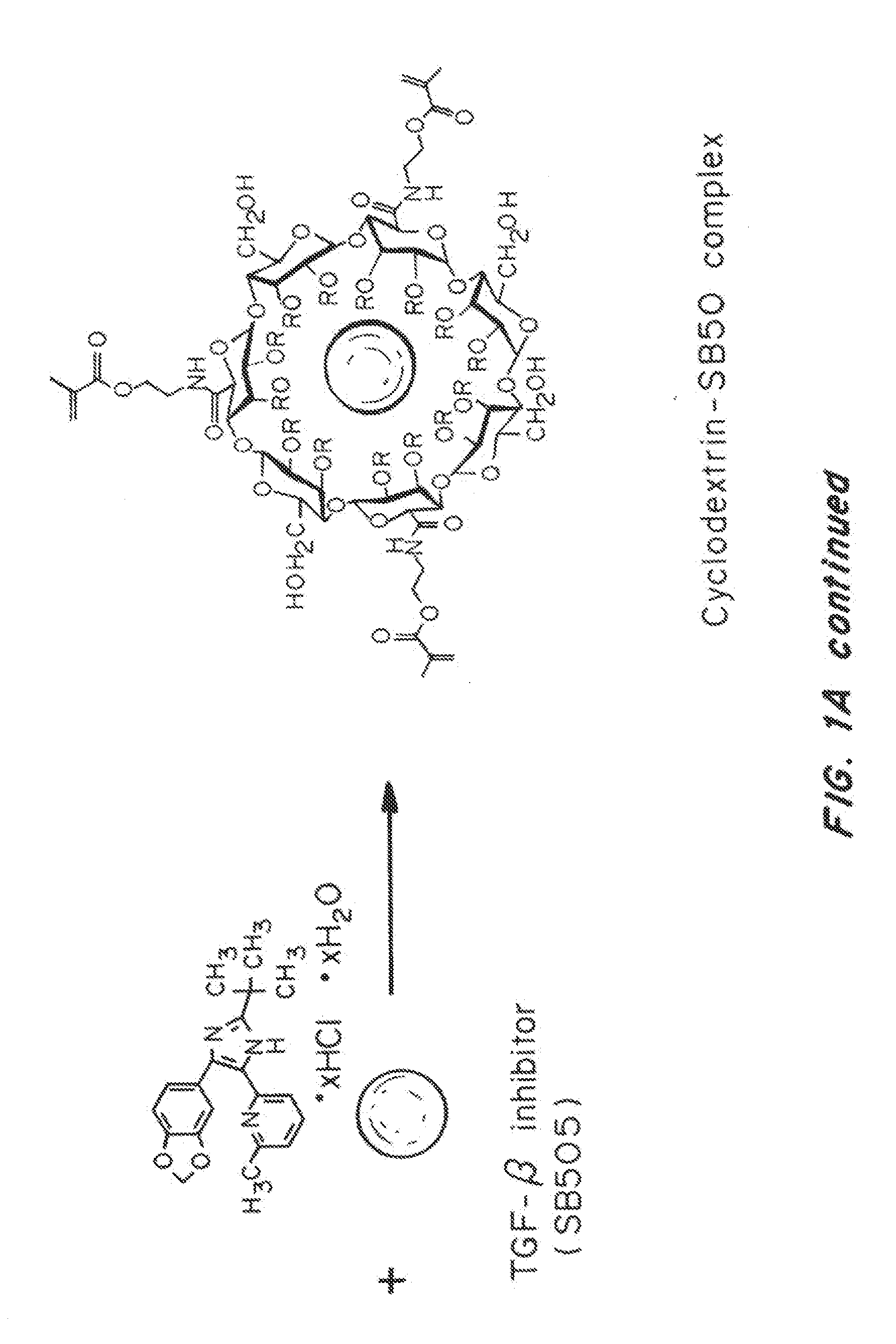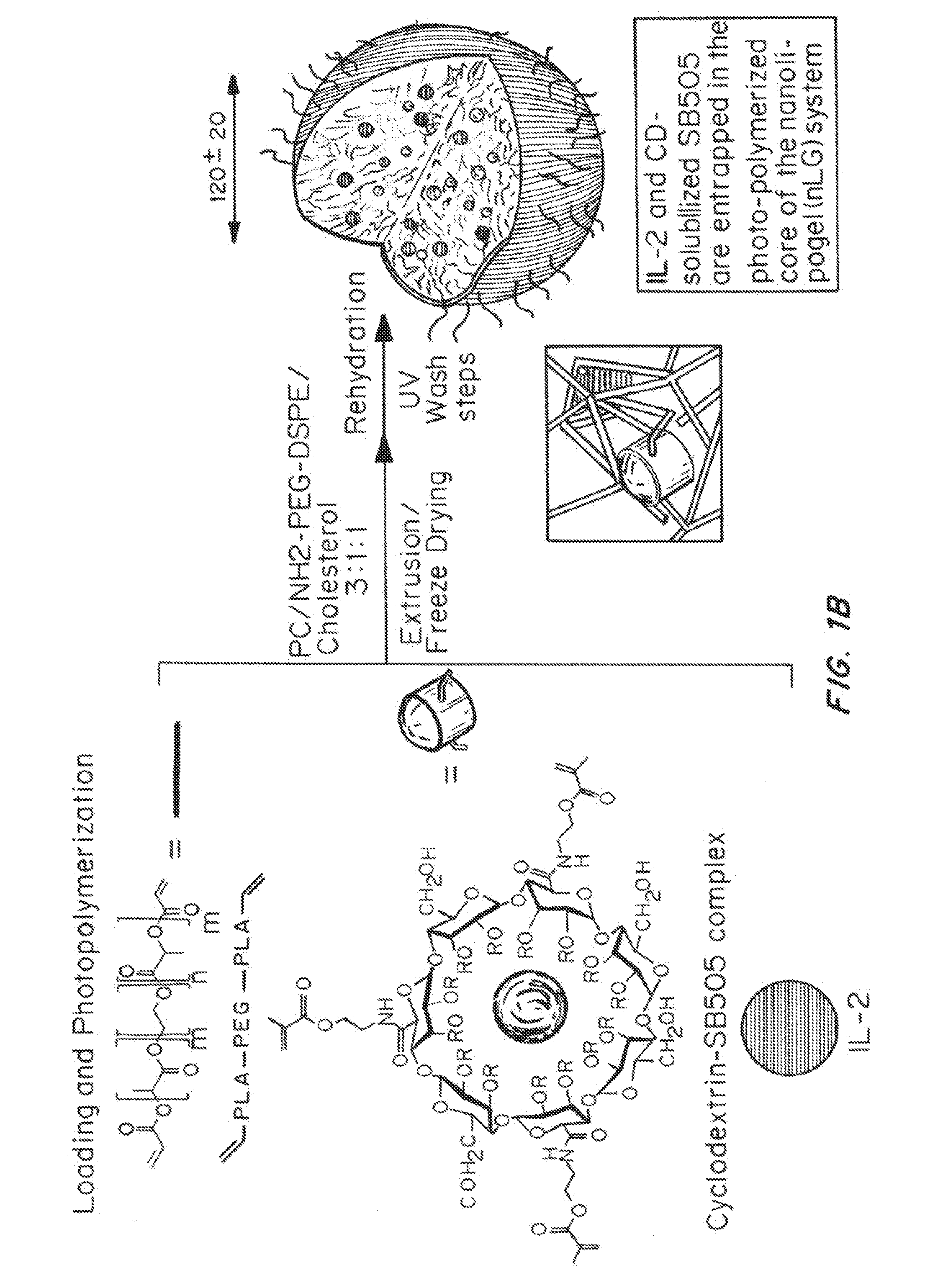Vehicles for Controlled Delivery of Different Pharmaceutical Agents
a technology of controlled delivery and pharmaceutical agents, which is applied in the direction of microcapsules, peptides, drug compositions, etc., can solve the problems of difficult control of the stability of the formulation and the release profile of the encapsulated agent, and the difficulty of encapsulation and controlled release of the therapeutic cytokines or combinatorial delivery, so as to increase the frequency of tregs and promote tolerance , the effect of increasing the number of donor-specific tregs
- Summary
- Abstract
- Description
- Claims
- Application Information
AI Technical Summary
Benefits of technology
Problems solved by technology
Method used
Image
Examples
example 1
Preparation of Nanolipogels for Delivery of Anti-Tumor Molecules
[0190]Materials and Methods
[0191]Nanolipogel Synthesis.
[0192]“Nanolipogel” (“nLG”) particles were fabricated from a degradable polymer (FIG. 1B). Liposomes were used as nanoscale molds for photo-initiated hydrogel formation. To achieve sustained release of the hydrophobic drug in conjunction with encapsulated proteins, methacrylate-conjugated β-cyclodextrins (CDs) were incorporated into the interior of the liposomes. β-cyclodextrins have a long history as solublization agents for hydrophobic compounds and are key excipients in various pharmaceutical formulations. This formulation procedure enabled co-encapsulation of both proteins as well as small hydrophobic drugs within the interior of the lipid bilayer (FIG. 1A-1B).
[0193]Conjugated CDs were created by reaction of succinylated-CDs with photosensitive methacrylate groups through hydrolysable ester groups. (FIG. 1A) Complexation of SB or rhodamine (for imaging) with fun...
example 2
In Vitro Release and Bioactivity Studies
[0207]Materials and Methods
[0208]Controlled Release Studies.
[0209]To demonstrate the advantage of nanolipogel vehicles for controlled release of encapsulated agents over prolonged periods of time, a series of studies were conducted to evaluate in vitro release of nanolipogel particles containing SB and / or IL-2. Release studies were performed at 37° C. with constant agitation in 1×PBS+10% fetal bovine serum. At each time point the complete volume was removed and replaced with fresh buffer after centrifugation (five minutes at 7200 ref). Nanolipo gels were resuspended by manual pipetting. Absorbance measurements to determine SB concentrations were performed with a Beckman Coulter plate reader at 300 nm. Absorbance readings from nLG-Empty particles were subtracted from those obtained from nLG-SB particles to ensure readings were due only to encapsulated SB. IL-2 release was determined using an IL-2 ELISA kit (BD Biosciences) with humanized captur...
example 3
Characterization of Nanolipogels
[0219]Encapsulation of IL-2 (80%) and / or drug (36%) did not significantly affect nanolipogel diameter; dynamic light scattering analysis revealed a mean diameter of 120 nm and polydispersity index of 0.2. Liposomes and nanolipogels incorporating amine-terminated PEGylated phosphatidyl ethanolamine demonstrated a neutral zeta potential, compared to the −22±10 mV zeta potential of liposomes formulated with only phosphatidyl choline and cholesterol. Cryo-TEM of nanolipogels showed the formation of spherical liposomal structures, detectable by light scattering even after disruption of the liposomal exterior by detergent, validating an inner gel core with approximately the same diameter as the intact nanolipogel. The in vitro cytotoxicity of this system was negligible.
PUM
| Property | Measurement | Unit |
|---|---|---|
| molar ratio | aaaaa | aaaaa |
| polydispersity index | aaaaa | aaaaa |
| diameter | aaaaa | aaaaa |
Abstract
Description
Claims
Application Information
 Login to View More
Login to View More - R&D
- Intellectual Property
- Life Sciences
- Materials
- Tech Scout
- Unparalleled Data Quality
- Higher Quality Content
- 60% Fewer Hallucinations
Browse by: Latest US Patents, China's latest patents, Technical Efficacy Thesaurus, Application Domain, Technology Topic, Popular Technical Reports.
© 2025 PatSnap. All rights reserved.Legal|Privacy policy|Modern Slavery Act Transparency Statement|Sitemap|About US| Contact US: help@patsnap.com



